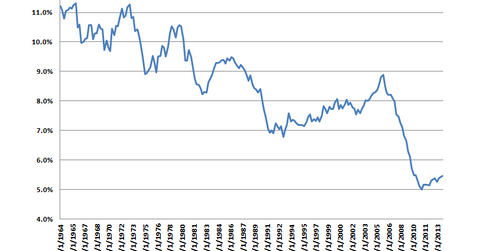Construction Spending is a key driver for the US economy
Construction spending is a major driver of job growth in the U.S. economy The Construction Put in Place Survey is released monthly by the Census Bureau and it measures the total dollar value of construction work in the United States. It covers both the public and private sectors and includes new structures as well as […]
Nov. 20 2020, Updated 10:52 a.m. ET

Construction spending is a major driver of job growth in the U.S. economy
The Construction Put in Place Survey is released monthly by the Census Bureau and it measures the total dollar value of construction work in the United States. It covers both the public and private sectors and includes new structures as well as improvements to existing structures. The data includes the cost of labor, materials, architectural work, engineering work, overhead, interest, taxes, and contractor profits.
Construction spending has historically led economies out of a recession, but this time, this didn’t happen because of the overhang from the real estate bubble. If you look at historical housing starts data, we’ve averaged about 1.5 million units per year since the 1950s. Prior to the bubble, they would range between 850,000 during the depths of a recession and over 2 million units during booms. Since the real estate bubble burst, we’ve averaged around 687,000 units per year, with a low of below 500,000.
Construction spending has been falling as a percent of GDP, but the last few years have been absolutely terrible, as construction spending peaked around 9% of GDP during the bubble to 5.5% or so today. Economists believe the multiplier from construction is quite high because it’s a labor-intensive industry that can put a lot of people to work.
We’ve seen big increases in average selling prices out of the homebuilders like Lennar (LEN), Toll Brothers (TOL), D.R. Horton (DHI), and PulteGroup (PHM) lately. This has allowed them to drive the top line. If residential home prices begin to level off (and affordability has taken a huge hit lately between higher rates and higher prices), then the builders will have to increase units to drive the top line. This will be bullish for the economy, as it will put a lot of people to work. Investors who want to bet on the sector as a whole should look at Standard and Poor’s SPDR Homebuilder ETF (XHB).
